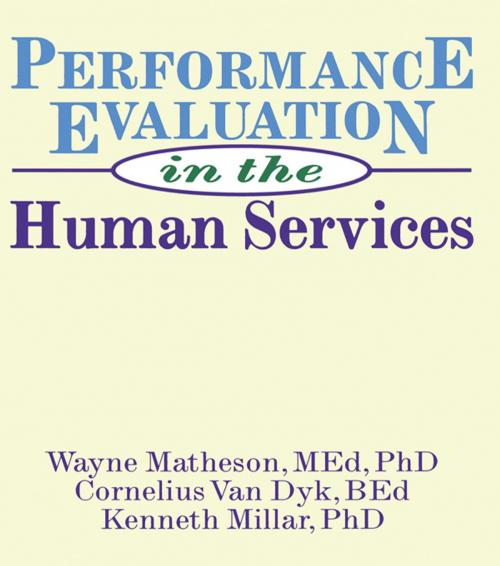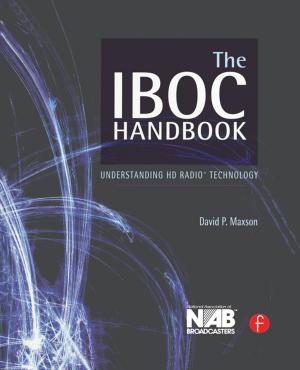Performance Evaluation in the Human Services
Nonfiction, Health & Well Being, Medical, Patient Care, Health Care Delivery, Social & Cultural Studies, Social Science, Social Work| Author: | Simon Slavin, Wayne Matheson, Kenneth Millar, Cornelius Van Dyk | ISBN: | 9781135906573 |
| Publisher: | Taylor and Francis | Publication: | March 18, 2014 |
| Imprint: | Routledge | Language: | English |
| Author: | Simon Slavin, Wayne Matheson, Kenneth Millar, Cornelius Van Dyk |
| ISBN: | 9781135906573 |
| Publisher: | Taylor and Francis |
| Publication: | March 18, 2014 |
| Imprint: | Routledge |
| Language: | English |
Performance Evaluation in the Human Services is a practical, specific book for managers on how to conduct performance evaluations. The book moves beyond the traditional rating scale and focuses on a new model involving the employee in the evaluation process. It stresses the need for evaluation scales to match the job description in a manner that is educational, future-oriented, and time-saving. Managers who must conduct performance reviews will find that this book presents a unique advancement on the use of behaviorally anchored rating scales for evaluation. The authors focus on the developmental/educational components of evaluation and stress employee empowerment as a result of evaluation.
The authors have created an employee review system with three core components. The new appraisal model works on a “One Size Fits All” philosophy. It can be applied to all employees while the exact evaluating qualities differ as each job description does. Fundamental features of this new evaluative model include:
-
the use of the “Benchmark” concept, a scale which indicates the level of the organization’s expectations and balances the administrative (evaluative) components and professional (developmental) issues
-
BARS, Behaviorally Anchored Rating Scales
-
CORE and A LA CARTE Dimensions which allows for evaluation of generic aspects of performance and job specific components
-
the use of traditional approaches to evaluation such as trait-based scales and forced comparison techniques
The rating system in Performance Evaluation in the Human Services serves as a means of identifying areas for middle and upper managers to identify areas for employees’professional growth and self-development. This approach is goal-oriented and can change and grow with the employee and the organization. Most importantly, it is built by both staff and management to be used as a tool for working together to define specific job requirements and how these requirements can be met and evaluated.
Performance Evaluation in the Human Services is a practical, specific book for managers on how to conduct performance evaluations. The book moves beyond the traditional rating scale and focuses on a new model involving the employee in the evaluation process. It stresses the need for evaluation scales to match the job description in a manner that is educational, future-oriented, and time-saving. Managers who must conduct performance reviews will find that this book presents a unique advancement on the use of behaviorally anchored rating scales for evaluation. The authors focus on the developmental/educational components of evaluation and stress employee empowerment as a result of evaluation.
The authors have created an employee review system with three core components. The new appraisal model works on a “One Size Fits All” philosophy. It can be applied to all employees while the exact evaluating qualities differ as each job description does. Fundamental features of this new evaluative model include:
-
the use of the “Benchmark” concept, a scale which indicates the level of the organization’s expectations and balances the administrative (evaluative) components and professional (developmental) issues
-
BARS, Behaviorally Anchored Rating Scales
-
CORE and A LA CARTE Dimensions which allows for evaluation of generic aspects of performance and job specific components
-
the use of traditional approaches to evaluation such as trait-based scales and forced comparison techniques
The rating system in Performance Evaluation in the Human Services serves as a means of identifying areas for middle and upper managers to identify areas for employees’professional growth and self-development. This approach is goal-oriented and can change and grow with the employee and the organization. Most importantly, it is built by both staff and management to be used as a tool for working together to define specific job requirements and how these requirements can be met and evaluated.















